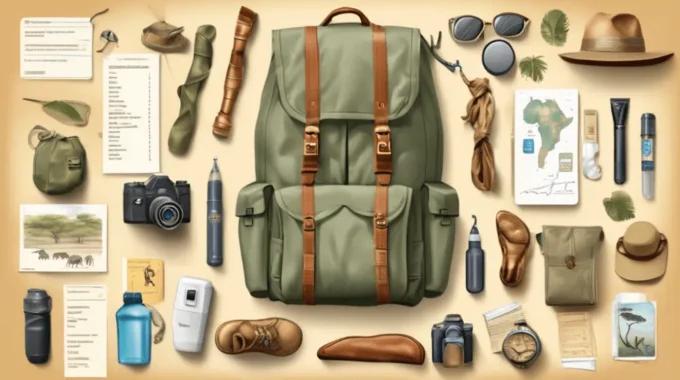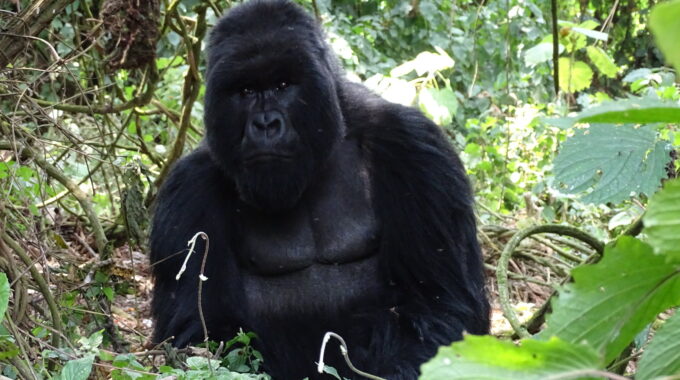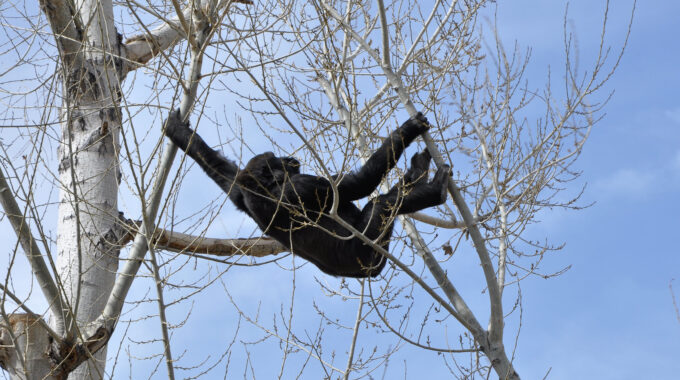10 Essentials Our Travel Experts Always Bring on Safari A safari is an exhilarating expedition. Rest…
What level of fitness is needed for gorilla trekking?
What level of fitness is needed for gorilla trekking? –
What level of fitness is needed for gorilla trekking? Gorilla trekking in Rwanda provides a unique opportunity to witness the endangered mountain gorillas in their natural habitat, especially in Volcanoes National Park. However, this incredible experience requires a certain level of physical fitness to ensure a safe, enjoyable, and rewarding trek. The physical demands of the trek vary depending on factors such as the terrain, weather conditions, and the location of the gorillas. In general, the trek requires moderate to high physical fitness, and below, we will break down the various aspects of the trek to help you understand the physical requirements.

Terrain and Altitude
Volcanoes National Park, located in the Virunga Mountain range, is known for its rugged terrain and steep slopes. The park covers over 160 square kilometers of dense forests, bamboo groves, and volcanic hills, all of which present challenges for trekkers. The trekking paths are often muddy and slippery, particularly after rainfall, and can require navigating through thick vegetation.
Most treks to see the gorillas involve steep ascents and descents, which can be physically taxing on the knees, hips, and legs. The altitudes of the Virunga Mountains, where the park is located, can range from 2,400 to 4,500 meters (7,900 to 14,800 feet) above sea level. While altitude sickness is not common at these altitudes, it can still affect some individuals, particularly those who are not accustomed to high altitudes or have respiratory conditions.
Trek Duration
The duration of the trek to find the gorillas can vary. On average, most treks last between 1 to 4 hours, depending on the location of the gorilla family assigned to you. However, the time spent trekking can be longer or shorter depending on factors like the gorillas’ movements and the terrain. Some trekkers may have to walk for up to six hours or more, especially if the gorillas are deep in the forest.
The physical demands of a long trek are significant, especially for those who are not used to extended periods of walking, climbing, or uneven footing. Having the stamina to walk at a steady pace for several hours is key to enjoying the experience.
Physical Fitness and Stamina
Given the varied terrain, a moderate to high level of fitness is necessary to enjoy the trek without undue fatigue. Those with a sedentary lifestyle or limited physical activity may struggle with the demands of the trek. Trekking involves consistent physical effort and balance as you navigate through challenging paths. Here are some fitness components that are especially important for gorilla trekking:
- Leg Strength and Endurance: Since the trek involves ascending and descending steep hills, having strong legs is crucial. Quadriceps, hamstrings, and calves need to be prepared to handle the constant strain of uneven slopes and uphill climbs.
- Cardiovascular Fitness: Good cardiovascular fitness is important to maintain a steady pace for the duration of the trek. The hike is not strenuous, but being able to walk for a long time without getting tired is crucial.
- Core Stability: Having strong abdominal and back muscles is essential for maintaining balance and stability on uneven or slippery terrain. A strong core reduces the risk of falls or injury while trekking through dense jungle.
- Mobility and Flexibility: In some cases, you may need to stretch your body to pass through thick vegetation or narrow paths. Flexibility and good joint mobility are necessary to avoid strain and discomfort.
Training for Gorilla Trekking
To ensure you’re physically prepared for a gorilla trek in Rwanda, it’s recommended to begin training well in advance. Here are some tips to help you build the necessary fitness:
- Cardio Workouts: Regular cardiovascular exercise, such as brisk walking, jogging, or hiking, can help you build endurance. Aim for at least 30-45 minutes of aerobic exercise, 3-4 times a week. Hikes with a backpack will simulate the trek conditions.
- Strength Training: Focus on strengthening the legs, core, and upper body. Squats, lunges, step-ups, and leg presses will help improve leg strength. Planks, Russian twists, and other core exercises will improve stability. Weight training can also be beneficial.
- Hiking Practice: If possible, hike on uneven and hilly terrain to simulate the trekking experience. If you can, try to hike with a backpack to get used to carrying some weight.
- Stair Climbing: Stair climbing is an excellent way to build strength in your legs, as well as improve endurance for walking uphill.
- Flexibility and Stretching: Incorporate yoga or stretching routines into your regimen to improve flexibility and joint mobility. This will help your body handle the twists and turns of uneven terrain more comfortably.
Preparing Mentally
While physical fitness is important, mental preparedness plays a key role in the trek. Gorilla trekking can be challenging, especially if the gorillas are located in a remote or difficult-to-reach area. Stay positive, calm under physical stress, and prepared for delays or difficult conditions to stay motivated and enjoy the experience.
Recommendations for Those with Limited Fitness
If you’re concerned about your fitness level, there are a few options available to make the trek more accessible:
- Porters and Guides: Local guides and porters are available to assist trekkers. Porters can help carry your backpack and offer support, especially during the more strenuous portions of the trek. Guides can also provide motivation and ensure you follow the safest and easiest paths.
- Shorter Treks: If you have limited fitness, you can request a shorter trek or be assigned a gorilla family that is located closer to the park entrance. Some groups of gorillas live in areas that are easier to access, reducing the overall difficulty of the trek.
- Medical Assistance: Trekking in high altitudes and challenging terrain may pose risks to those with existing health conditions, such as heart disease or respiratory problems. Always consult with your doctor before undertaking the trek to ensure that your health is not at risk.
Conclusion
What level of fitness is needed for gorilla trekking? Gorilla trekking in Rwanda is an unforgettable adventure that combines wildlife observation with physical exertion. While a moderate-to-high level of fitness is recommended, it’s not an insurmountable challenge for most people. With preparation, the trek can be fun and rewarding, allowing you to meet one of the world’s most amazing animals. Strength, endurance, and mental toughness will make Rwanda’s stunning mountains a rewarding experience for hikers of all levels.



